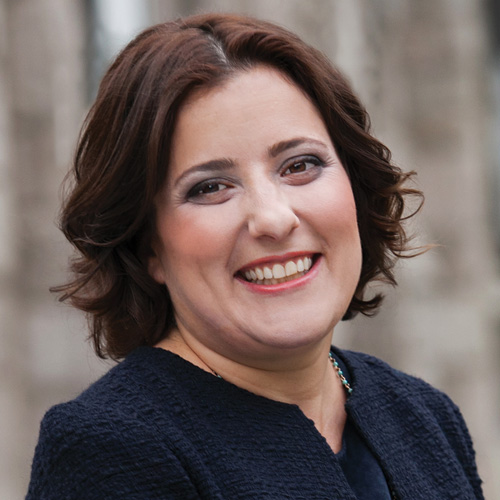First-year seminars were not the most popular teaching assignments at my old university. It was hard work to persuade undergraduates who were new to sociology that their individual experiences counted for rather less than the conclusions derived from careful empirical studies.
But such a pedagogic task was small beer compared with the much greater problem of persuading someone in the group, anyone in the group, to open their mouth and offer even so much as a tentative opinion. Silence was the default position.
But all this would change with the arrival of an American occasional student. Although these young people were attending the university for only a year, they typically displayed none of that marginality in seminars. They not only raised their hands, but they waved them enthusiastically. Me-me-me! Not everything they had to say was germane to the topic or particularly incisive, but their degree of passionate involvement had a galvanising effect on other students.
One occasion sticks in my mind. I was talking about the manner in which British working-class children were systematically excluded from higher education. How was the trick done? What were the discriminatory mechanisms? It was at this point that a blonde, suntanned American occasional student named Sophie interrupted my flow to point out that if these British working-class students had only been better motivated, then they might have readily overcome some of the barriers being described. “You have to believe in yourself,” she said, glancing around at her passive fellow students. “You’ll never succeed unless you believe.”
It was Barry, a glum-faced mature student from Newcastle, who rose to the challenge. “You’ve been duped,” he told Sophie. “You’ve fallen for the American dream. You probably think you could be president if you only put your mind to it.”
I sat back happily and let the argument develop. My sociological sympathies were all with Barry, but there was something irresistibly moving about Sophie’s passionate insistence on the power of belief, the importance of living by that American dream. She was not merely parroting political or cultural slogans; she was describing the ideology of her life.
It is the very persistence of this dream in the heads and hearts of American youth – a persistence apparently unaffected by hard-nosed statistics or the appropriation of the phrase by generations of opportunistic politicians – that lends so much poignancy to this fine new book by educational sociologist Sara Goldrick-Rab.
What absorbs Goldrick-Rab is that essential constituent of the American dream, the long-standing belief, constantly celebrated in popular culture, that anyone can achieve success in life by working their way through college. This may have been true in the past, but the research reported in this book shows how the world has shifted. “Today”, writes Goldrick-Rab, “the promise of a college degree in exchange for hard work and dedication no longer holds true…Unfortunately many people don’t know this. Millions enrol in higher education with plans to work, borrow, and save, only to find that their funds still fall short. Even living on ramen, doubling up with roommates, and working a part-time job isn’t enough to make ends meet. Many who start college can’t afford to complete their degrees. Others take on huge debt that either they cannot repay or limits their future opportunities.”
These sad conclusions are based on six years of dedicated research into the life and times of 3,000 young adults who entered public colleges and universities in Wisconsin with the support of federal aid such as Pell grants (government subsidies for students in financial need). Goldrick-Rab’s findings don’t simply cast doubt upon this aspect of the American dream. They blow it sky-high. Half the students in her study left college without a degree, and among those who stayed the course, less than 20 per cent finished their degree within five years.
Such outcomes had nothing to do with lack of effort or motivation. It was nearly all down to lack of money. Not only had discretionary grants failed to keep pace with rising tuition fees, but the students were also faced with the increased costs of books and accommodation. Neither could these extra costs be met by work. Goldrick-Rab points out that “the ability of today’s students to make ends meet through work alone has been compromised by at least two factors: underfunding of the federal work-study program, and a weak economy that offers few stable opportunities to part-time workers”.
Goldrick-Rab’s study is replete with statistical evidence of the dilemmas faced by many of the students in her sample. But these figures are leavened by very moving stories of the manner in which individual students desperately try to square the financial circle. She recalls the day when Stacey, a student in her own sociology of education class, fell fast asleep before her eyes. “I was offended. Here I was, teaching at the state’s flagship university, struggling to do research while teaching a full load, and this student had the nerve to nap in my class!”
Stacey’s explanation quickly put paid to her tutor’s indignation. She worked for a grocery store that was two miles away from campus and paid a higher wage for employees who worked the night shift. “That was an offer that Stacey could not pass up. Several days a week, she left school and travelled to…stock shelves from 11 p.m. until 6 a.m., before returning home to change her clothes, drink some coffee, and come to my class. She was motivated, the first in her family to attend college, and trying her best to make ends meet, but she was also exhausted…As her professor, I knew none of this – until I asked.”
It transpired that 62 per cent of the students in the Wisconsin survey worked during their first year of degree study. They averaged 18 hours a week on the job, with many working between the hours of 10pm and 8am. But even this could not keep the wolf from the door. The college education that was meant to provide so many students with the American dream route out of poverty “left them feeling poorer than ever”.
No serving academic in this country can possibly read this book without being uncomfortably aware of domestic parallels. How long will it be before all those bland political assurances about the disadvantaged not being deterred by the current cost of attending university in this country are shown to be so much hokum? How long before all poorer students are forced to opt for second-rate universities nearer to home rather than attend their university of choice? How long before all students begin to recognise that the ever-rising tuition fees and the abolition of maintenance grants mean that they will owe an average of £41,000 on graduation, a debt many will still be repaying by the time they reach their fifties?
Goldrick-Rab subtitles her book “The Betrayal of the American Dream”. British dreams of how free higher education for all might improve social mobility were perhaps more modestly articulated. But one fears that the destruction of that hope by current government funding policy is, in the very near future, about to become shockingly explicit.
Laurie Taylor is a fellow of Birkbeck, University of London.
Paying the Price: College Costs, Financial Aid, and the Betrayal of the American Dream
By Sara Goldrick-Rab
University of Chicago Press, 368pp, £19.50 and £21.50
ISBN 9780226404349 and 4486 (e-book)
Published 17 October 2016
The author

Sara Goldrick-Rab is professor of higher education policy and sociology at Temple University and a high-profile advocate for greater post-secondary access and equity. She was born and raised in northern Virginia and attributes her outlook “to a tradition of scholarship combined with social justice that dates back to my grandparents, intense readers and writers who taught me that making the world better was our family way. I also believe that aligns with my Jewish heritage.”
She began her university studies in sociology at William & Mary. “I was unhappy with the lack of diversity, so I transferred to George Washington University. I was extremely determined, declaring my major in my first year of school, and finished in three and a half years even though I also worked 40 hours a week as a waitress.” Her early exposure to the difficulties faced by less-well-off students was first-hand. “I was struggling myself. I didn’t qualify for financial aid and my parents had insufficient savings. That’s why I waited tables.”
Goldrick-Rab joined Temple this year from the University of Wisconsin-Madison. “I have no regrets about leaving. I came to Temple because there are not true tenure protections offered at UW any more, and Temple provides a rich intellectual home and both a union and good tenure protections. I love my new job, and especially the way in which Temple faculty feel they have an obligation to do – not just to think.”
What gives her hope? “Massive changes in the conversation about higher education that have occurred over the past 10 years in this country. I never thought that President Obama would put the words ‘free’ and ‘college’ in a sentence together – and he did. We are going to make higher education policy align with its value – it’s priceless, and no one should be kept out for lack of funds.”
Karen Shook
POSTSCRIPT:
Print headline: Expensive crash courses in reality
Register to continue
Why register?
- Registration is free and only takes a moment
- Once registered, you can read 3 articles a month
- Sign up for our newsletter
Subscribe
Or subscribe for unlimited access to:
- Unlimited access to news, views, insights & reviews
- Digital editions
- Digital access to THE’s university and college rankings analysis
Already registered or a current subscriber? Login




